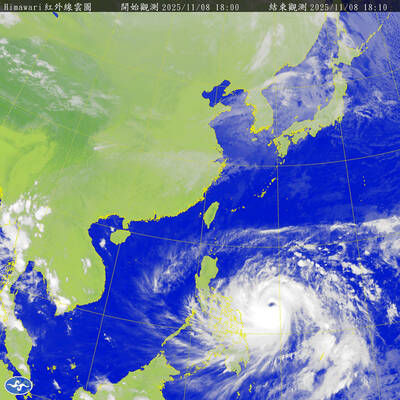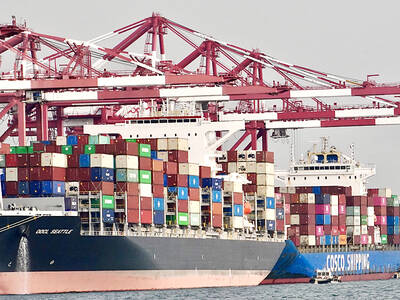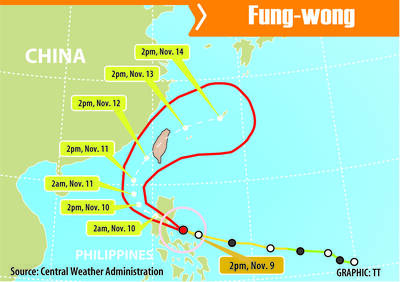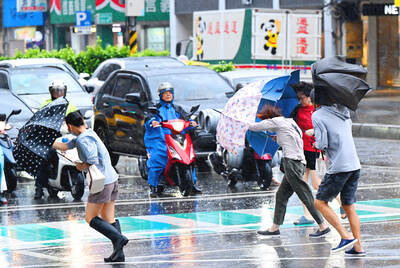Two former senior US officials on Asia praised Taiwan on Wednesday for dealing responsibly with regional conflicts.
Former US assistant secretary of state for East Asian affairs Kurt Campbell and former National Security Council director for Asian affairs Michael Green said Taiwan should be seen as a “model” for countries in the region.
During a discussion on “Crisis in the East China Sea,” organized by the Center for Strategic and International Studies in Washington, the two were asked what role Taiwan might play in a crisis.
Green said the US should focus on the first and second island chains because these were “critical strategic lines” and Taiwan was “right in the middle.”
He said that in recent potentially dangerous incidents, Taiwan had acted with great “responsibility” and that Taipei’s reaction to security problems should be seen as a model for others.
Citing Taipei’s handling of the shooting of a Taiwanese fisherman by the Philippine Coast Guard and fishing rights disputes with Japan, Campbell said that what Taiwan had been able to achieve was “remarkable.”
“Frankly, they did not get enough credit,” he said.
“Taiwan should be seen as a model for how to deal with competing impulses that drive this nationalist agenda,” he said.
In reaching an agreement with Japan over fishing areas and energy issues, Campbell said Taiwan had found a way for both sides to jointly exploit resources in a manner that left territorial claims unresolved. This was a strategy that the US and others had been trying to encourage “behind the scenes,” he said.
He added that the region that has seen the biggest increase in defense spending over the past several years is Asia — and not the Middle East.
“And it’s not just China, Japan and South Korea — it’s countries in Southeast Asia,” he said. “This is a region that is arming up.”
US leadership is essential in helping with the rise of Asia, Campbell said, adding that some issues could not be managed effectively without a strong US presence.
However, Green said there was a “nervousness” in Japan about whether the US really has the “juice” if things got rough in the East China Sea.
“The feeling is that the US is still the most powerful country in the world, but it is shaky,” he said.
Campbell said that the biggest risk was an unintended action — something unpredictable — like an exhausted fisherman deciding to crash his boat into another country’s military vessel and the incident spiraling out of hand.
“There is virtually no chance of some sort of larger preplanned armed conflict,” he said.
He added that the US has tried to enlist China in a series of discussions “that can best be described as establishing the rules of the road.”
Citing a recent incident in which US and Chinese ships sailed very close to each other, he said that protocols were needed in case there was an accident.
“In truth we have tried now for almost two decades to enlist China in these discussions and frankly we have to ask ourselves why we are having such difficulty,” Campbell said.
“There are a number of reasons, and the first is that China still regards the US military as the gold standard,” he added.
China did not want to reveal its own limitations and capabilities, Campbell said.
At the same time, there were tensions between the Chinese Communist Party and the People’s Liberation Army.
“They do not like their military engaged in policy in the way that our forces are engaged on a regular basis,” he said.
“They are very careful in exposing the military to what they believe is the exclusive domain of senior party officials,” he said. “What the Chinese want is for the US not to operate so regularly and so closely to their borders.”
Campbell added that Beijing was worried that if it reached a protocol agreement with the US on how to deal with an accident, it would be like “giving seat belts to speeders.”
For China believed that such an agreement would give the US greater confidence when operating close to the Chinese borders because if their was a crisis the US would have the ability to get out of it, he said.
“They don’t want us to have that confidence when operating near them,” he said.
China has a very different concept of deterrence from the US, he added.
While the US shows off its military to keep other countries in line, China keeps its forces secret in the belief that uncertainty will cause potential enemies to be more careful, he said.
“There are very deep differences in strategic culture,” he said.
The great challenge of the next 20 years would be to find some common ground, Campbell said.
With the frenetic quality of American diplomacy, we are really going to have to really focus on this,” he said.

The Central Weather Administration (CWA) yesterday said it expected to issue a sea warning for Typhoon Fung-Wong tomorrow, which it said would possibly make landfall near central Taiwan. As of 2am yesterday, Fung-Wong was about 1,760km southeast of Oluanpi (鵝鑾鼻), Taiwan’s southernmost point, moving west-northwest at 26kph. It is forecast to reach Luzon in the northern Philippines by tomorrow, the CWA said. After entering the South China Sea, Typhoon Fung-Wong is likely to turn northward toward Taiwan, CWA forecaster Chang Chun-yao (張峻堯) said, adding that it would likely make landfall near central Taiwan. The CWA expects to issue a land

Taiwan’s exports soared to an all-time high of US$61.8 billion last month, surging 49.7 percent from a year earlier, as the global frenzy for artificial intelligence (AI) applications and new consumer electronics powered shipments of high-tech goods, the Ministry of Finance said yesterday. It was the first time exports had exceeded the US$60 billion mark, fueled by the global boom in AI development that has significantly boosted Taiwanese companies across the international supply chain, Department of Statistics Director-General Beatrice Tsai (蔡美娜) told a media briefing. “There is a consensus among major AI players that the upcycle is still in its early stage,”

The Central Weather Administration (CWA) yesterday said it is expected to issue a sea warning for Typhoon Fung-wong this afternoon and a land warning tomorrow. As of 1pm, the storm was about 1,070km southeast of Oluanpi (鵝鑾鼻), Taiwan’s southernmost point, and was moving west-northwest at 28 to 32kph, according to CWA data. The storm had a radius of 250km, with maximum sustained winds of 173kph and gusts reaching 209kph, the CWA added. The storm is forecast to pass near Luzon in the Philippines before entering the South China Sea and potentially turning northward toward Taiwan, the CWA said. CWA forecaster Chang Chun-yao (張峻堯) said

PREPARATION: Ferry lines and flights were canceled ahead of only the second storm to hit the nation in November, while many areas canceled classes and work Authorities yesterday evacuated more than 3,000 people ahead of approaching Tropical Storm Fung-wong, which is expected to make landfall between Kaohsiung and Pingtung County this evening. Fung-wong was yesterday morning downgraded from a typhoon to a tropical storm as it approached the nation’s southwest coast, the Central Weather Administration (CWA) said, as it issued a land alert for the storm. The alert applies to residents in Tainan, Kaohsiung, Pingtung and Taitung counties, and the Hengchun Peninsula (恆春). As of press time last night, Taichung, Tainan, Kaohsiung, and Yilan, Miaoli, Changhua, Yunlin, Pingtung and Penghu counties, as well as Chiayi city and county had